
These gratings are made in the usual way, with two spatially filtered beams meeting up at the film transport with an angle between them of 18 degrees, both beams symmetrically 9 degrees from the normal. This results in a fringe system which is perpendicular to the film plane, hence the term unslanted in the title.
I hand these gratings out to my Physics of Light class students at Harrngton Colege of Design to analyze different sources of light. Viewing an incandescent bulb through the grating reveals a continuous spectrum; looking at a fluorescent lighting fixture shows not only the spectrum of the phosphors, but the strong mercury lines. And of course the mercury lines reveal themselves exquisitely when looking at mercury vapor streetlights through the grating, unless sodium vapor streetlights are installed in your neighborhood. Looking at LED's show that they have distinct spectral characteristics.
Sandwich a couple of them and look at light sources. Run some laser beams through them and look at all the dots on the wall! Stick them in your window and watch the sunlight dispersed on the ceiling!
The batch of gratings for the Holo Pass Around were shot in 2011. The very first batch of this type of grating I made was way back in 1987, on the prototype Big Beam! I have a vivid recollection of going to a fireworks display on the Fourth of July of that year with my best girlfriend ever, Lynn Schultz, the one that I let get away. It was impossible to drive to the show with them on!
Here is an overview picture of a Big Beam, the original one, although this shot is from the Spring of 2008, when I had set it up in my basement darkroom. Made it kind of awkward to move around down there, but one of the Beam's qualities is quick assembly and tear down. Nothing is set up on it at this point.

I usually pimp this device as ideal for single beam projects, but there is no reason to not set up a split beam setup! Here is a picture of the beamsplitting equipment and spatial filters mounted on half inch diameter rods which are placed in holes drilled in the wooden beam, and cross-braced the heck out of it for stability and drift-free operation. This picture is of the Beam in a previous incarnation of my studio, taken at the time of the recording of the original set of gratings in 1987.
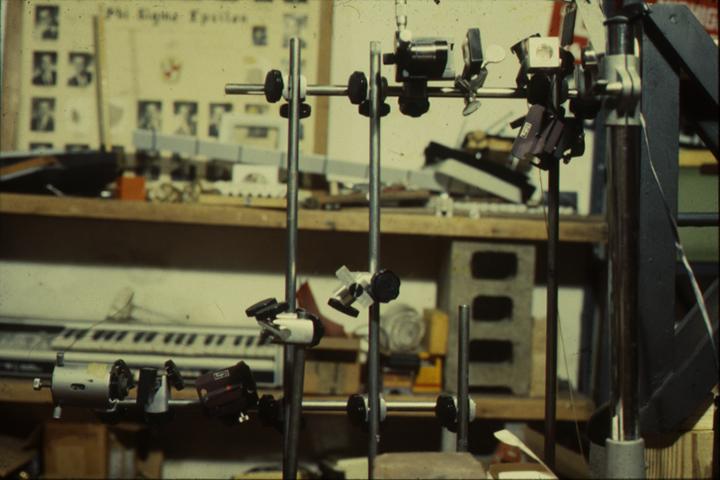
This is a view of what the filmholder sees with the room lights on; a pair of spatial filters pointed at it. The top one that is flared out is a Jodon; the lower one is a Gaertner. The concrete blocks on the Big Beam are for more mass for increased stability, and handy storage for tools as you are working.
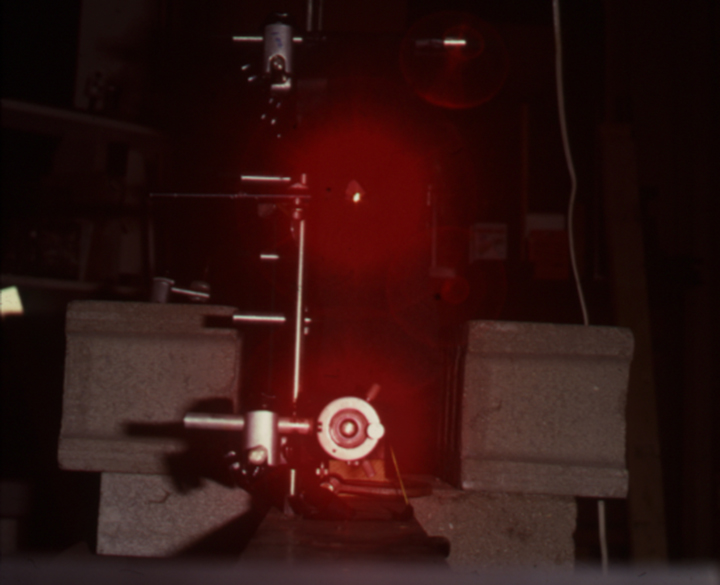
Here is what the filmholder see when the lights are out; a pair of point sources!
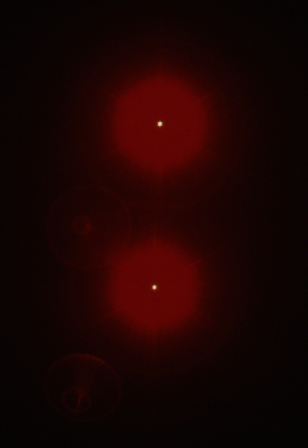
Here is the 70mm Film Transport mounted on the Big Beam. Note the pencil in Northwestern University purple, which is where I was working when this Kodachrome was shot.
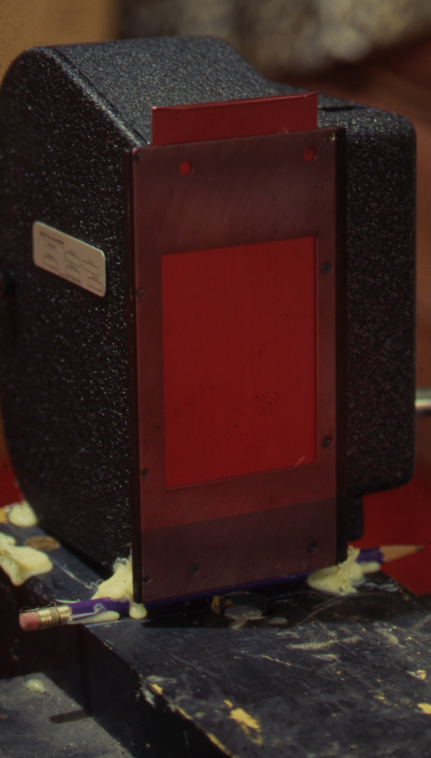
Here is a more conventional plateholder on the beam. The metal rods fit into the tee cross piece.
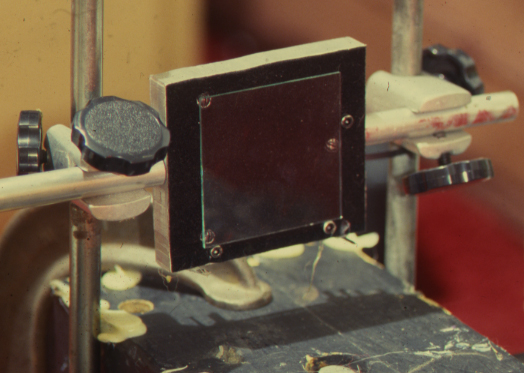
After running 100 feet of 10E75 film through the film transport, it was developed in the PyroChrome process, in the 100 foot reel and tanks.